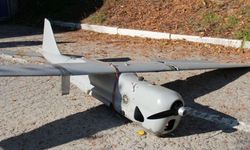India's becoming the first country to land the Chandrayaan-3 rover on the south pole of the moon last month was met with skepticism in China, which broke the record for landing on the south side of the moon.
A senior Chinese scientist said that claims about the development, which India declared a major achievement, were exaggerated.
Ouyang Ziyuan, hailed as the father of China's lunar exploration program, told the Chinese-language Science Times newspaper that the Chandrayaan-3 landing site at 69 degrees south latitude was nowhere near the point described as 88.5 to 90 degrees.
"On Earth, 69 degrees south would be within the Antarctic Circle, but the lunar version of the circle is much closer to the pole. This is wrong!" he said, questioning the accuracy of India's landing on the Moon.
"Chandrayaan-3's landing site is neither at the lunar south pole, nor in the lunar south pole region, nor near the lunar south pole region," the renowned explorer said.
Chandrayaan-3 is 619 kilometers (385 miles) from the polar region, Ziyuan said.
India's space agency has not yet responded to a request for comment on the Chinese scientist's claims.
After Chandrayaan-3's landing, the Communist Party's Beijing-based Global Times newspaper quoted senior space expert Pang Zhihao as saying China had much better technology.
China's space program "has the capacity to send orbiters and landers directly into the Earth-Moon transfer orbit, a maneuver that India has not yet been able to perform given the limited capacity of its launch vehicles since the launch of Chang'e-2 in 2010," the newspaper reported, adding, "The engine used by China is also much more advanced."
On the other hand, Russia's attempt to land a spacecraft near the south pole of the moon ended in failure last month when it crashed into the lunar surface.
In 2019, China's Chang'e 4, the first spacecraft to land on the far side of the moon, landed 45 degrees south. The crewless NASA probe Surveyor 7 reached the moon at about 41 degrees south in 1968.
The United States and China have been focusing on the region with plans to send astronauts to the moon for the first time since NASA's Apollo program ended half a century ago.












